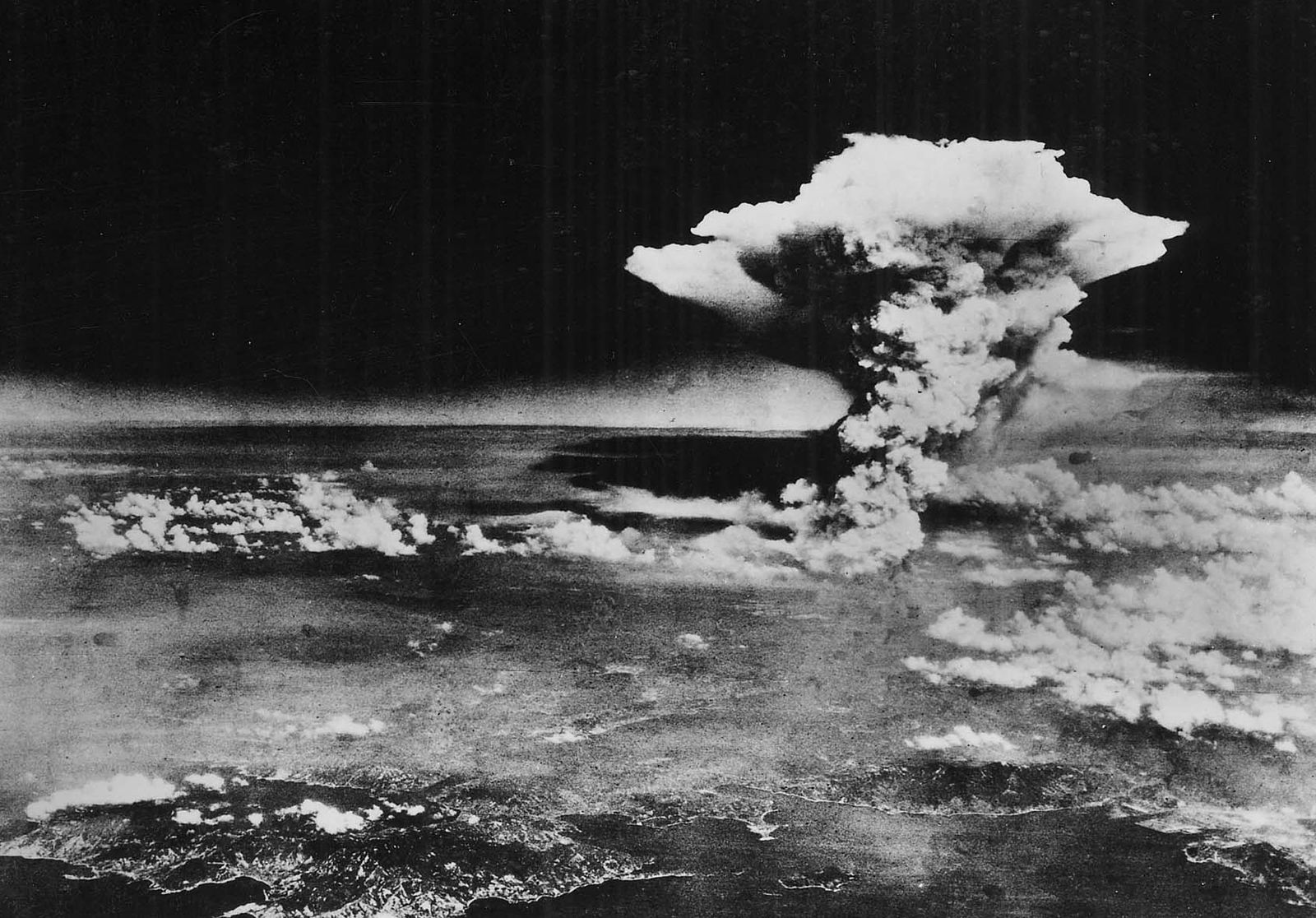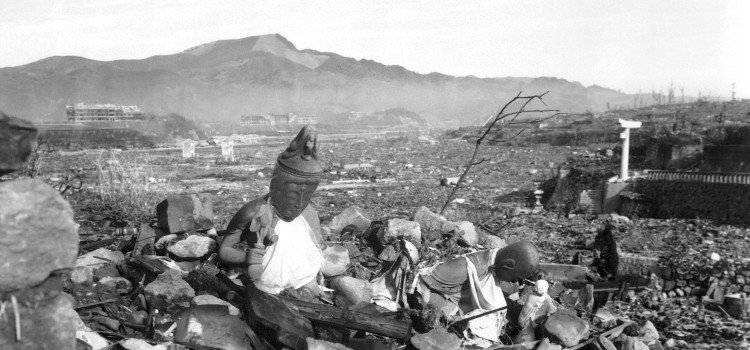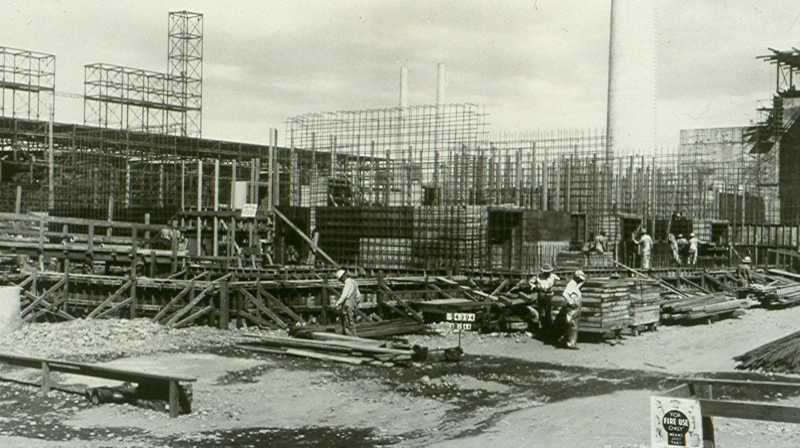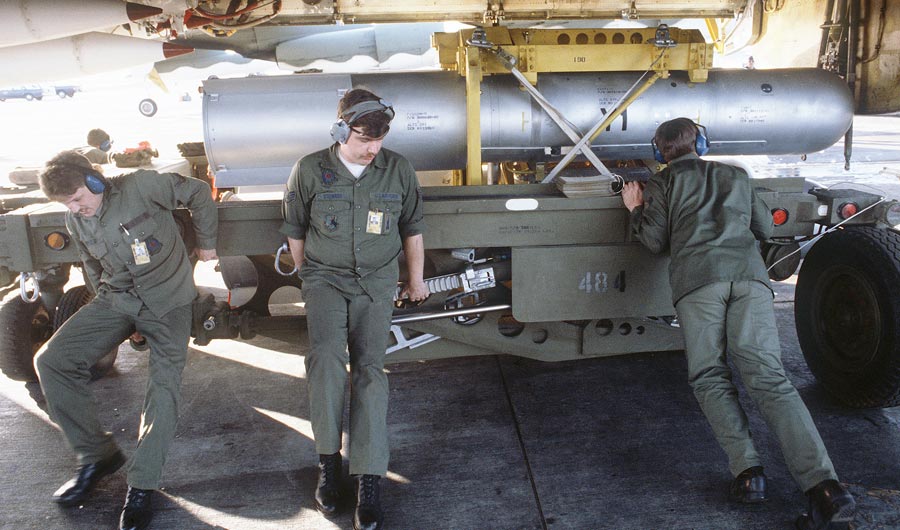Related Reading from the Inside Science Archive
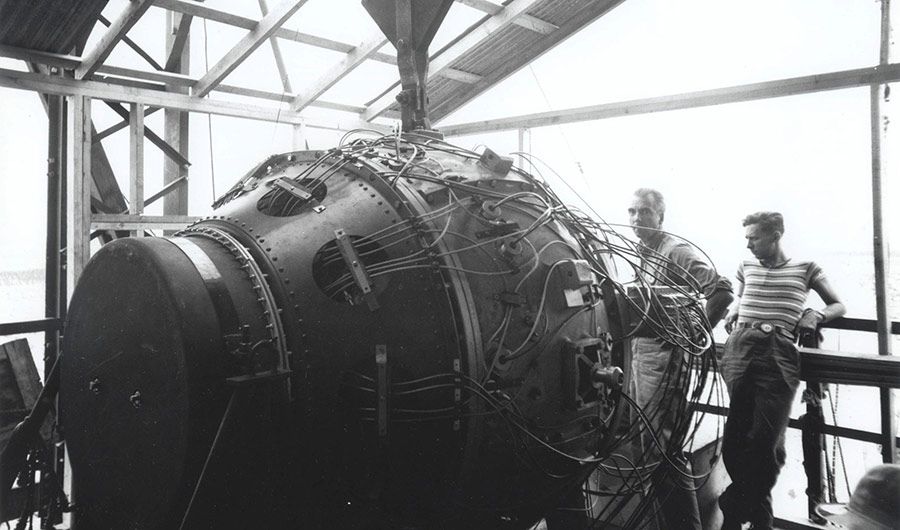
Norris Bradbury and one other man with the "gadget," before it exploded in the Trinity test on July 16, 1945.
The stories and infographics below showcase Inside Science's previous coverage of issues related to the 75th Anniversary of the first atomic bomb test. Please visit our anniversary collection, Seventy-Five Years After Trinity, for more stories and information describing the far-reaching ways the Manhattan Project has influenced science and society.
Infographic that details the relative risks of radiation exposures from different events.
Seventy Years Later, Atomic Bombs Still Influence Health Research
Decades after atomic bombs dropped, scientists debate their application to modern radiation safety standards.
Japanese Balloon Attack Almost Interrupted Building First Atomic Bombs
Plutonium processing plant was saved by conservative engineering.
For 75 years, scientists have been trying to devise a way to make a vast supply of radioactive and chemically dangerous waste at the Hanford Nuclear Reservation safe.
The Science of Dismantling a Nuclear Bomb
Once the tricky political agreements have been reached, how do nations take apart their nuclear weapons?
For more stories, videos and infographics related to Inside Science's coverage of the far-reaching ways that the Manhattan Project influenced science and society, visit our page: Seventy-Five Years After Trinity.

